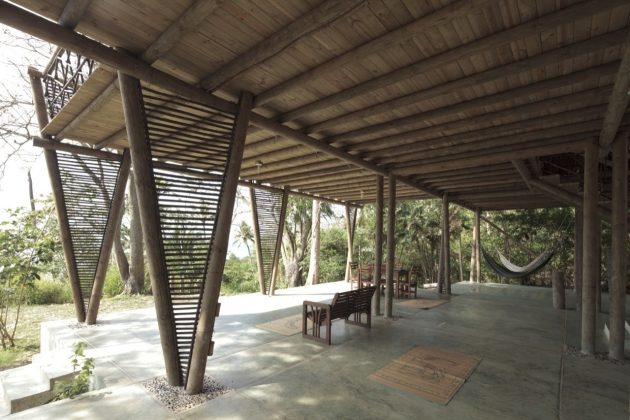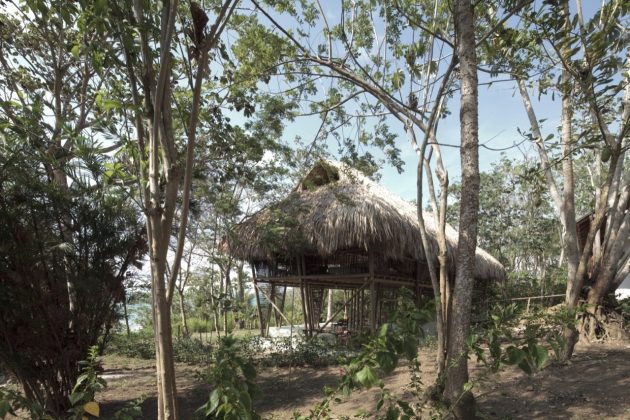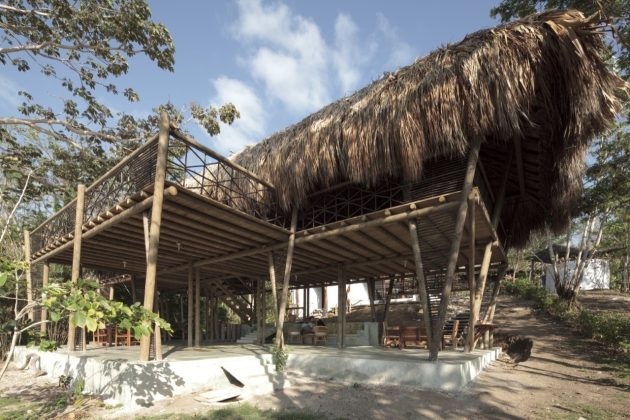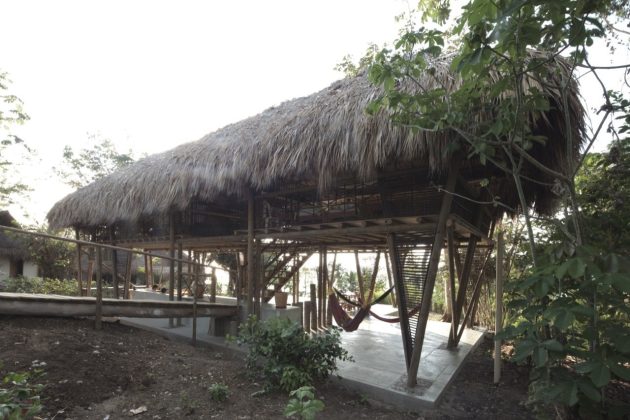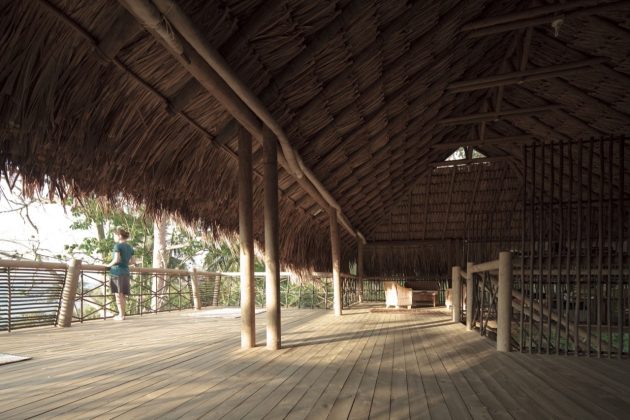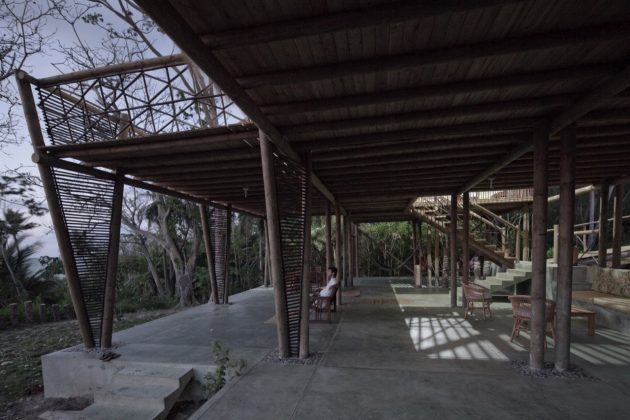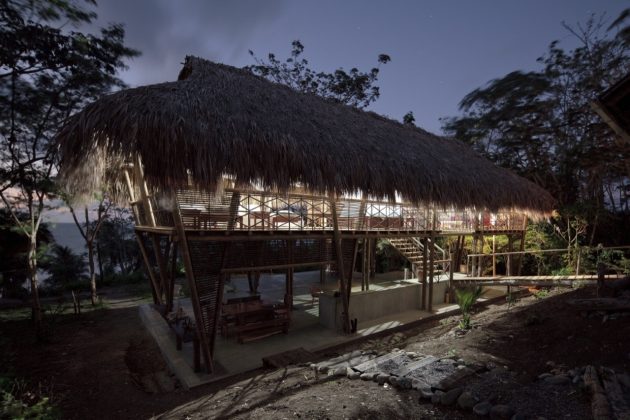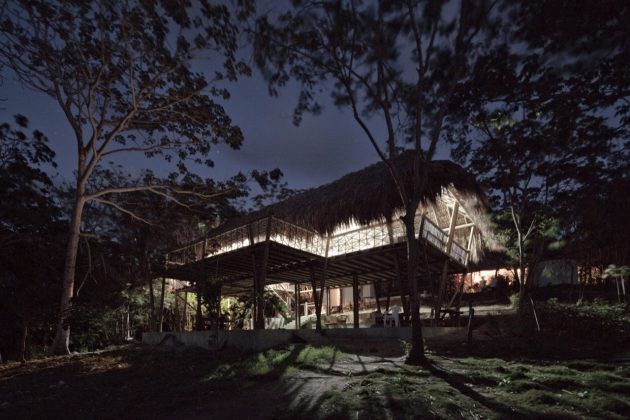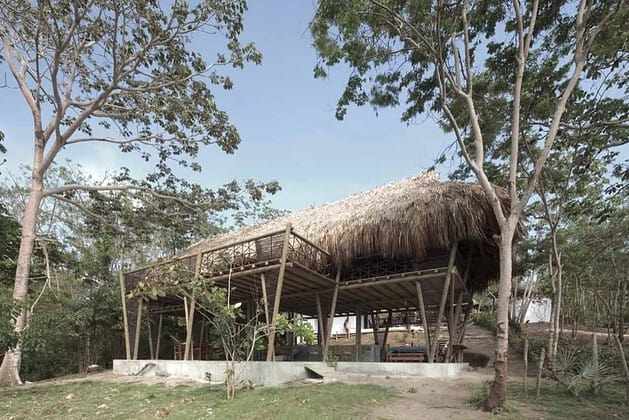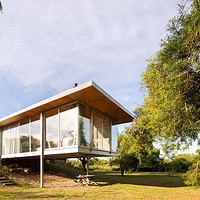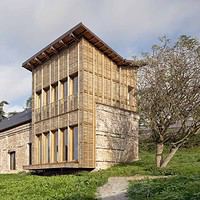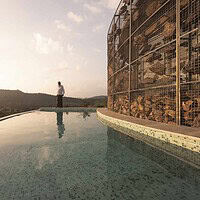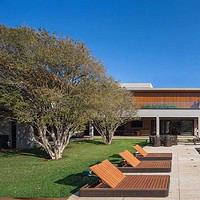Project: Rio Cedro House
Architects: Plan:b arquitectos
Location: Monitos, Colombia
Photographs by: Sergio Gomez
Rio Cedro House by Plan:b arquitectos
The Rio Cedro House in Colombia is a sustainable building that integrates itself with the surrounding tropical dry forest ecosystem. The house was built using cultivated, immunized and certified Caribbean Pine timber, treated with sustainable practices, in order to avoid using native woods. The roof was built using branches of the “Palma Amarga” and the enclosure elements were made of stems of the “palmalata” plant, both of which can be managed with controlled individual extractions.
The building features an open and permeable design that allows passive cooling via crossed ventilations and precise bioclimatic qualities. The elevated and open social ground floor acts as a covered platform for all the areas for daylight activities, while the first floor provides a more intimate space designed for night activities. The difference between the levels provides a separation from the daylight and nocturnal activities, allowing a house that is pierced by the vegetation and weather on the ground floor, but with more control and restraint on the second level.
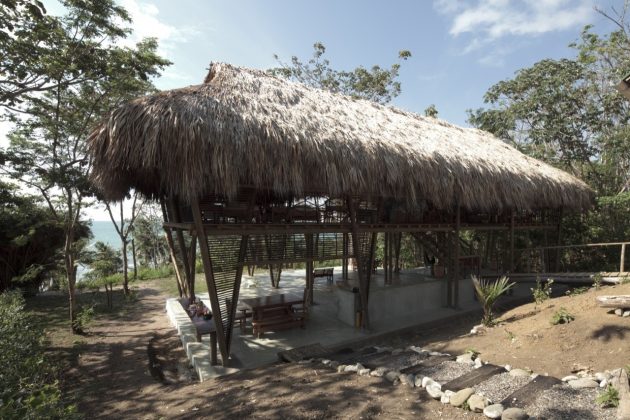
This building articulates itself to the ecosystem of a tropical dry forest located in the shoreline of the Caribbean Sea in Córdoba, a department situated in the north of Colombia. Historically, this area has been victim of extensive deforestations, thanks to constant cattle raising activities, and the massive extraction of timber trees. This situation has highly affected the mangroves and their vast biological diversity.
With this in mind, this house presents itself as an open and modulated structure that, to avoid the use of the native woods, is built on cultivated, immunized and certified Caribbean Pine timber, treated with sustainable practices. Before thinking about a structure that can resist certain efforts and charges, we thought about a structure that can be pierced and permeated by its surroundings. The structural and modular possibilities of the constructive system we chose would eventually give form to certain technical, tectonic and geometric aspects of the building, such as the tilted braced columns, the heights of the platform and roof, the length of the spans, etc. In accordance to local traditional techniques of construction, the roof was built using the branches of the “Palma Amarga” (Sabal mauritiiformis). The building’s enclosure elements are made of stems of the “palmalata” plant (Bactris guineensis). Both of these plants can be managed with controlled individual extractions. In order to make the timber structure more rigid, we built a reinforced concrete base. With this material we also defined some elements and fixtures on the ground floor, such as a sofa, the stairs, and a secondary table.
Rio Cedro has warm weather throughout the entire year, and only one strong rain season yearly. Taking this under consideration we proposed an open and permeable design that allows passive cooling, via crossed ventilations. The 30 centimeters width of the roof and its organic material guarantee both, temperature control and impermeability against the rain. In this way, we create precise bioclimatic qualities: We avoid the heat and humidity by directing the flow of the wind, and we define constant shade through the design of the roof and by the building’s orientation towards the sun: (the main facades face the north and the south).
Following certain local construction strategies, the house is defined with an elevated and open social ground floor that acts like a covered platform that includes all the areas for the daylight activities. The living room, dining room, and hammock areas can all trade places on the same plane. In the first floor we find a lower profile around the perimeter, this defines a more intimate space designed for the night activities. In this floor you can enjoy the view of the intricate weave of the branches in the inner slopes of the roof. Once again we create a platform in which beds and small furniture can be moved around or even increase its numbers to enhance capacity. The difference between the levels provides a separation from the daylight and nocturnal activities, allowing a house that is pierced by the vegetation and weather on the ground floor, but with more control and restraint on the second level.
